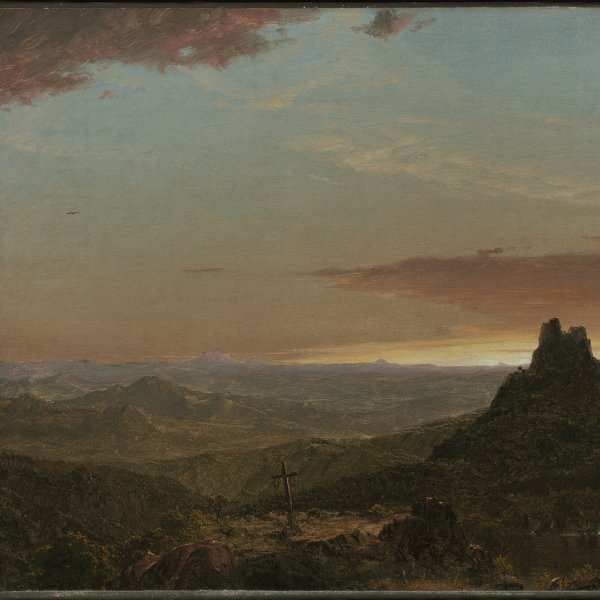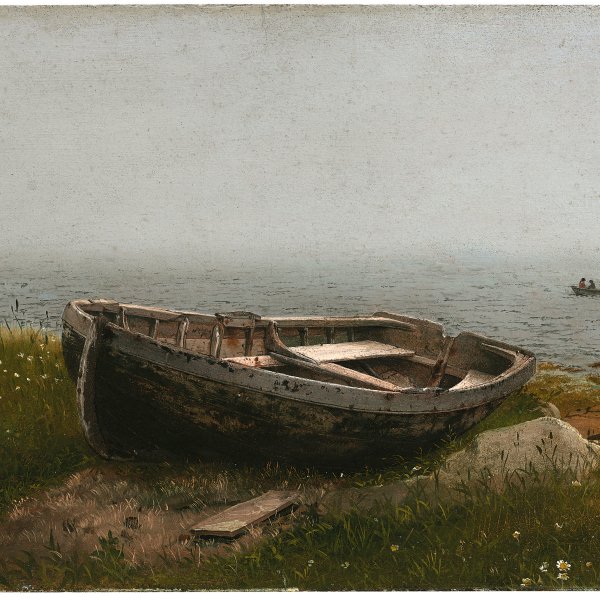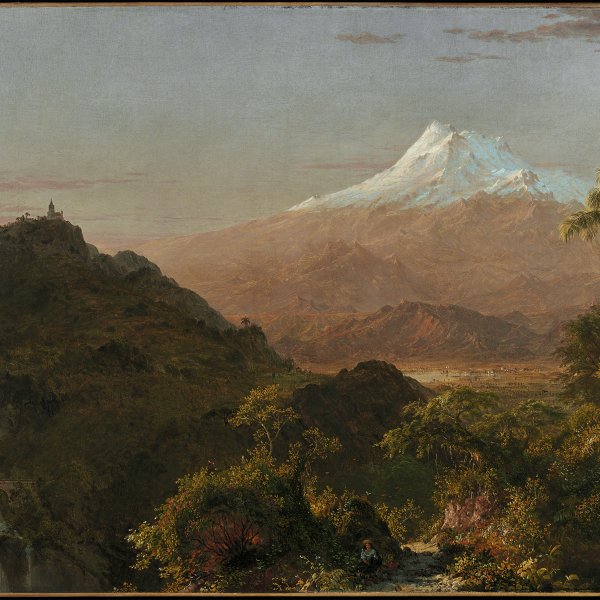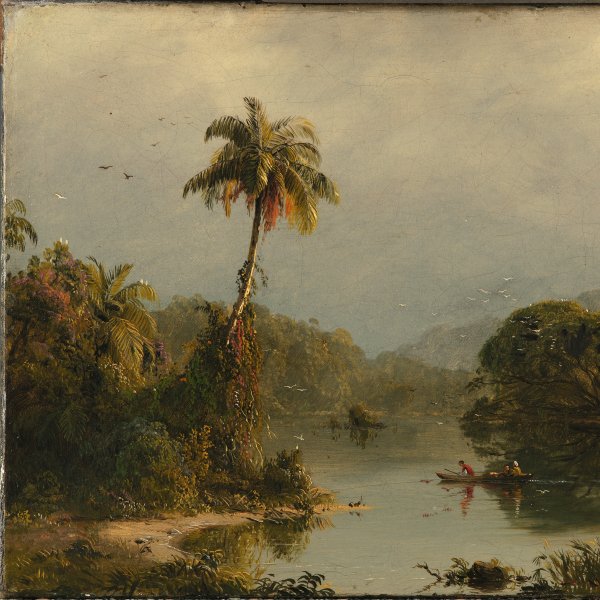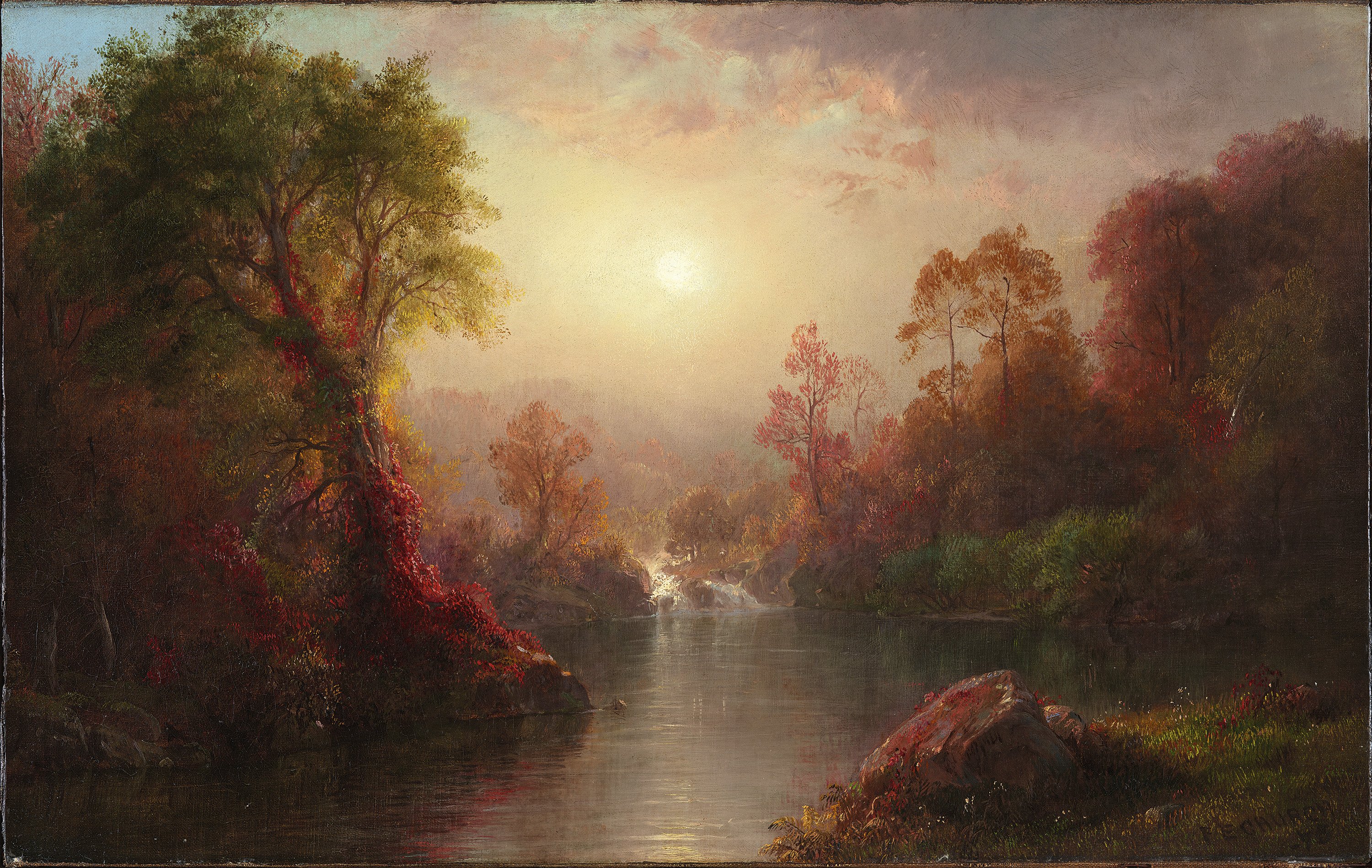Autumn
In the 1850s Frederic Edwin Church became fully established as the great American landscape painter. Around 1870, and following his travels in America and the “Old World”, he decided to build Olana, the mansion that would become his private Eden on the banks of the Hudson River. Church spent lengthy periods there, painting the changing landscape and light at different times of the year.
Autumn depicts a bend in the river with the changing hues of the season. A warm, misty background light suffuses the entire scene, which is framed by a large tree on the left and a single rock on the right bank. The vegetation that covers the rocks and tree trunks ranges in tone from green to red and is reflected in the waters of the river. The painting was probably commissioned by William Henry Osborn, a friend and collector of Church’s work who shared the artist’s fascination with nature.
CM
Here, as in the latter works of Joseph Turner, with whom Church is sometimes compared, the light is the central feature of the composition. However, in addition to these romantic aspects consideration should be given to Church’s growing interest in capturing the effects of light and atmospheric changes, which stemmed from his study of the same scientific treatises used by his Impressionist contemporaries. Proof of this is the fact that his library at Olana included works such as John Tyndall’s Forms of Water in Clouds and Rivers (1872), Eugene Lommel’s Nature of Light with a General Account of Physical Optics (1876) and Ogden Rood’s Modern Chromatics with Application to Art and Industry (1879).
Paloma Alarcó





